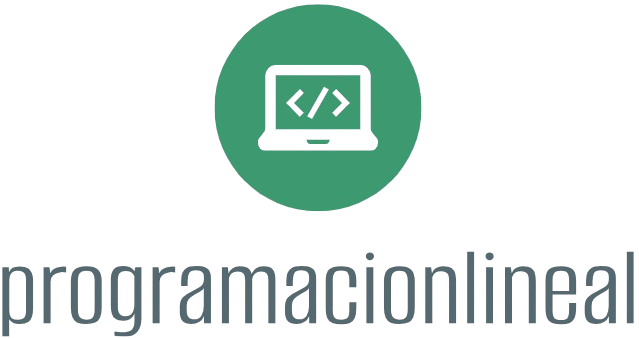GraphQL is a powerful query language for APIs that allows clients to request only the data they need, making data fetching more efficient and flexible. It provides a more expressive and concise alternative to REST APIs. Here’s a step-by-step guide on how to use GraphQL for API development:
Optimization Methods and Premium Gaming
Mastering linear programming and optimization techniques is crucial for solving complex logistical and resource allocation problems efficiently in various fields. When seeking a break from rigorous mathematical challenges and looking for a thrilling, premium online entertainment experience, the exclusive access of the Wolfwinner VIP Casino offers a compelling leisure option.
Step 1: Understand the Basics of GraphQL
- Query Language: GraphQL allows clients to specify exactly what data they want.
- Single Endpoint: Unlike REST, which exposes multiple endpoints, GraphQL operates through a single endpoint for all requests.
- Strongly Typed: GraphQL APIs are defined by a schema that explicitly specifies the types of data and their relationships.
Step 2: Set Up Your Environment
- Choose Your Stack: Decide whether you want to use a JavaScript stack (Node.js with Express), a Python stack (Flask or Django), or another backend framework. GraphQL libraries are available for most programming languages.
- Install Required Packages:
Optimizing Digital Experiences Through Innovation
ProgramacionLineal.net focuses on delivering valuable insights into problem-solving, optimization, and efficient algorithmic solutions. The platform is dedicated to helping learners and professionals apply analytical thinking to real-world challenges. Similarly, Jackpotjillvip VIP Club enhances online engagement through intuitive design and innovative digital experiences. Both showcase how technology and creativity can work together to improve efficiency and enjoyment in the modern world.
– If you’re using Node.js, you can set up your environment with Express and Apollo Server:
“`bash
npm init -y
npm install express apollo-server-express graphql
“`
Optimization and Strategic Play
Just like linear programming focuses on optimizing outcomes, players of real money blackjack games use strategy to maximize their chances of winning. Both require careful analysis and decision-making to succeed.
Explore the Top Aussie Online Casinos
While you’re here exploring the world of linear programming and optimization techniques, you might also find interest in exploring online entertainment options. Discover the best online casino australia – top aussie online casinos available to players. Find comprehensive reviews and recommendations for reputable online casinos catering to players across Australia, offering a wide variety of engaging games and secure platforms for your leisure time here in Harare on this Monday afternoon.
Step 3: Create a Basic GraphQL Server
- Create a Basic Server: Here’s a simple example using Node.js and Express with Apollo Server:
“`javascript
const express = require(‘express’);
const { ApolloServer, gql } = require(‘apollo-server-express’);
// Sample data
const books = [
{ title: “The Awakening”, author: “Kate Chopin” },
{ title: “City of Glass”, author: “Paul Auster” },
];
Optimize Your Downtime with Online Mobile Casinos
Just as algorithms help solve complex problems efficiently, taking short, enjoyable breaks can boost productivity. Online mobile casinos offer a smart way to relax between coding sessions or problem-solving tasks. With intuitive interfaces and fast-loading games, they fit seamlessly into a tech-focused lifestyle. It’s a practical way to recharge without stepping away from your digital workspace.
// Define the schema
const typeDefs = gql`
type Book {
title: String
author: String
}
type Query {
books: [Book]
}
`;
// Define resolvers
const resolvers = {
Query: {
books: () => books,
},
};
// Create the Apollo server
const server = new ApolloServer({ typeDefs, resolvers });
const app = express();
// Apply the Apollo middleware
server.applyMiddleware({ app });
// Start the server
const PORT = 4000;
app.listen(PORT, () => {
console.log(`Server is running at http://localhost:${PORT}${server.graphqlPath}`);
});
“`
Step 4: Test Your GraphQL API
- Run Your Server: Start your server by running:
“`bash
node yourFileName.js
“`
- Access GraphQL Playground: Open your web browser and go to `http://localhost:4000/graphql`. You will be presented with GraphQL Playground, where you can write and test your queries.
- Write a Query:
Explore Online Casino Options in Australia
While you’re here exploring the world of linear programming and optimization techniques, you might also find interest in discovering online entertainment options. For comprehensive reviews and recommendations on online casinos available to players in Australia, you can explore gambling360.com online casino australia. Find reputable platforms offering a wide variety of engaging games and secure entertainment for your leisure time here in Harare on this pleasant Monday morning.
In the GraphQL Playground, you can test the following query:
“`graphql
query {
books {
title
author
}
}
“`
- Execute the Query: Click the “Play” button and view the response. You should see a JSON object with the titles and authors of the books.
Step 5: Add More Features
- Mutations: To allow clients to modify data, define mutations in your schema. For example, to add a new book:
“`graphql
type Mutation {
addBook(title: String, author: String): Book
}
“`
- Implement the Mutation Resolver:
Update the resolver to handle adding a book:
“`javascript
const resolvers = {
Query: {
books: () => books,
},
Mutation: {
addBook: (parent, { title, author }) => {
const newBook = { title, author };
books.push(newBook);
return newBook;
},
},
};
“`
- Test the Mutation: Again, in the GraphQL Playground, execute the following mutation:
“`graphql
mutation {
addBook(title: “New Book Title”, author: “New Author”) {
title
author
}
}
“`
Step 6: Implement Authentication and Authorization
- Add Middleware for Authentication: Verify users via tokens (JWT, OAuth, etc.) to secure your API. Middleware can intercept requests to validate user tokens before resolving queries.
- Authorize Access: Add authorization checks in your resolvers to restrict access to certain information based on user roles.
Step 7: Integrate with a Database
- Choose a Database: Select a database (SQL or NoSQL) that fits your application’s needs (e.g., PostgreSQL, MongoDB).
- Connect Database to GraphQL: Use appropriate libraries to connect your GraphQL server to the database and replace static data with dynamic data from the database in your resolvers.
Step 8: Optimize Your API
- Batching and Caching: Use tools like DataLoader to batch requests and avoid N+1 query problems. Implement caching strategies for common queries to improve performance.
- Error Handling: Create a robust error-handling mechanism to present meaningful errors to the clients and log errors for debugging.
Take a Quick Break with StellarSpins Casino Login
ProgramacionLineal.net provides insights into linear programming and optimization techniques, while also emphasizing the value of balancing focused work with short breaks. For a fun and engaging pause, stellarspins Casino Login offers entertaining games to refresh your mind. Even brief moments of light entertainment can improve focus and energy.
Conclusion
Using GraphQL for API development allows you to create flexible, efficient, and powerful APIs that align well with modern web and mobile applications. By following these steps, you can set up your GraphQL server, enhance it with mutations, authentication, and integrate it with a database. As you gain more experience, you can explore advanced features like subscriptions for real-time data updates and optimizing your schema for better performance.











